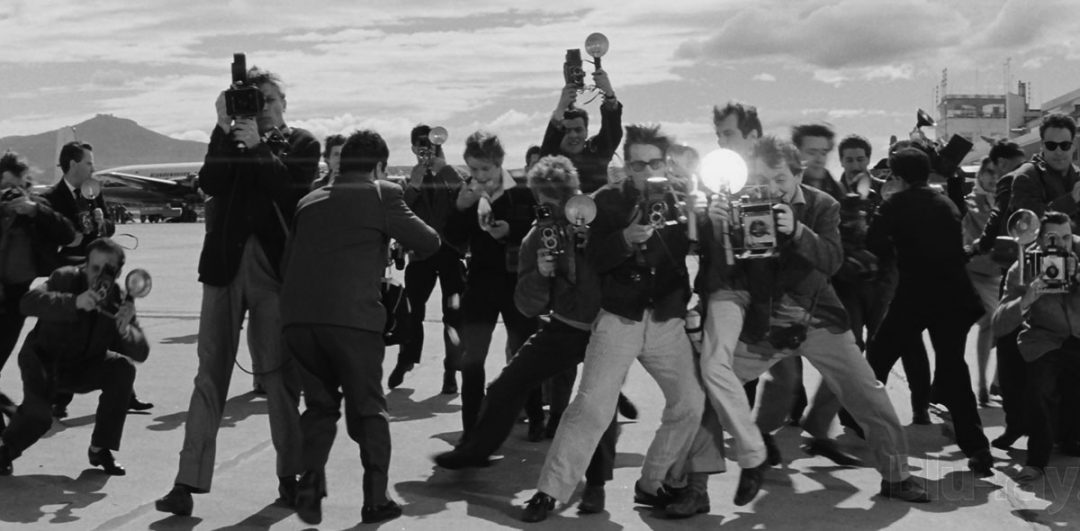Paparazzi
were here well before there was digital, Lady GaGa or ads by Dolce and Gabbana. With their myriad of film cameras. Once photographers found out they could make money from a photo of Brigitte Bardot or Marilyn Monroe, the race was on. And it’s never ended. In fact, it’s gotten easier and faster. First, we have to look at all the cameras used. While there were those employing 35mm cameras, especially Leicas, the choice of the “Weegee cam” was quite prevalent. Which of course was the Speed Graphic camera. Relatively large, limited in lenses,, and not the fastest thing on 2 wheels. Even using flash was a chore. I guess you could say it was an era where photographers actually worked for a living.
The Original Paparazzi
I don’t think the original paparazzi were actually berated when the genre originated. It was only later, when they not only became too numerous, but became intrusive as the payoffs became higher and higher. In fact, the movie studios and record companies encouraged their artists to be the subject of as much free publicity as possible.
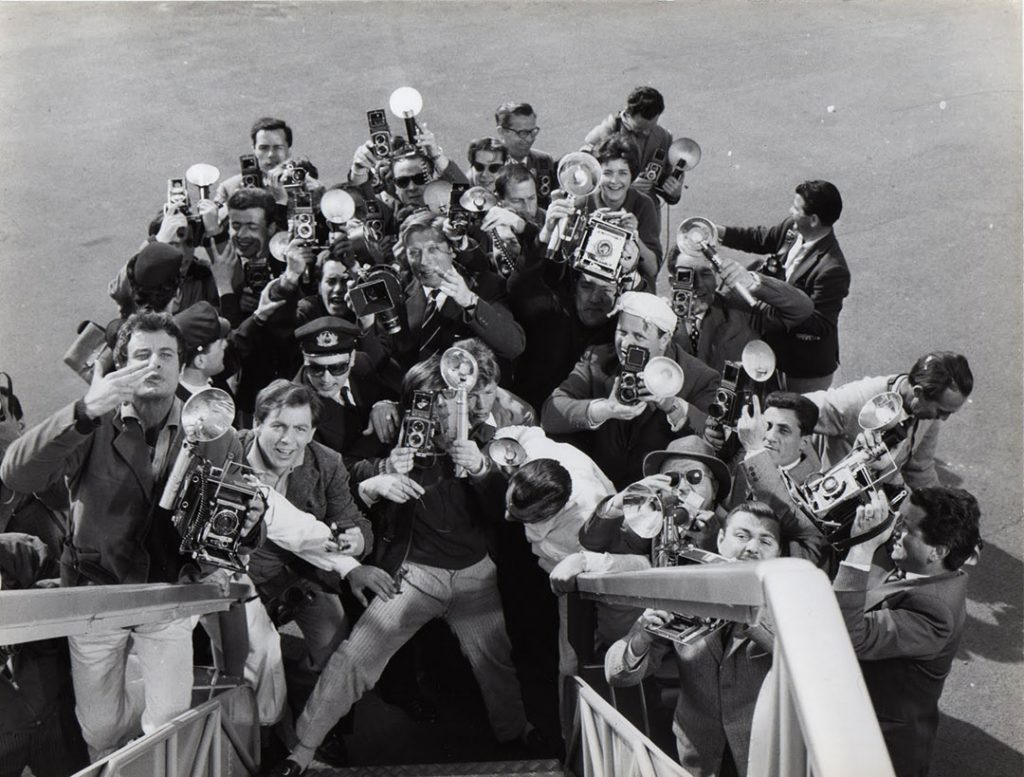
By the late 60’s, most paparazzi had switched over to ‘roll film’ cameras. However, most clung to medium format cameras. The Rolleiflex TLR was quite popular, and almost considered standard gear. The touch-up and press screen process was still preferring the larger formats. Why, I don’t know. But this is what editors were asking for. I suppose in that pre-digital era, they were easier to drum scan. And you never knew when that image would be used in a higher resolution glossy. (as opposed to a newsprint screen) Or maybe, like sheep, everyone just followed the next guy.
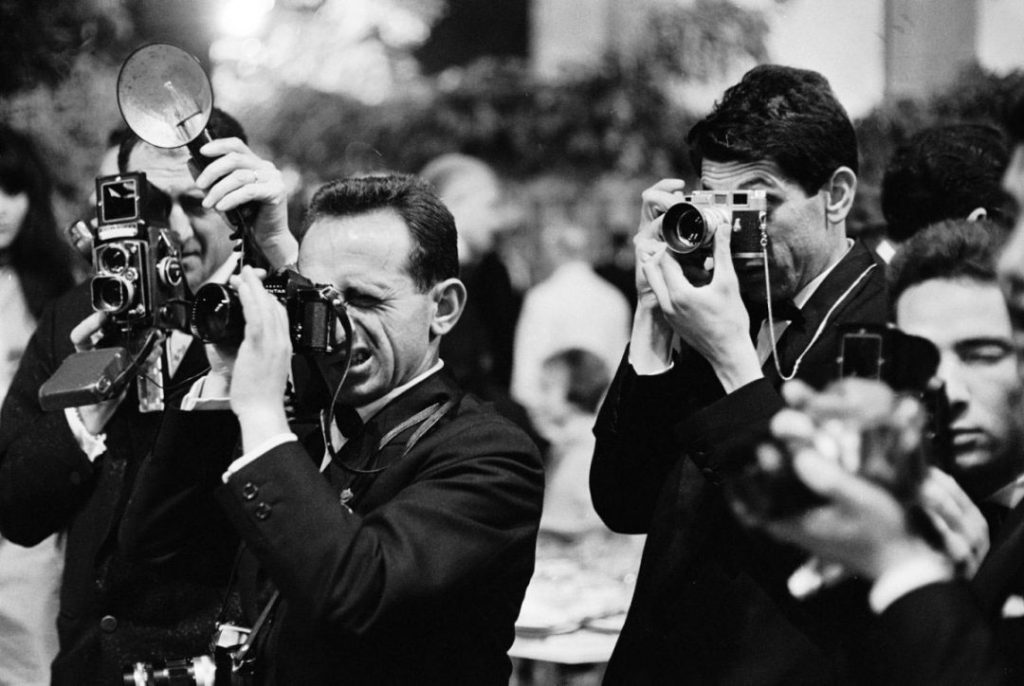
The 35mm Revolution
By 1980, the Nikon F3 came out. While there were other cameras before that, some with available motor drives, it seemed the ruggedness and reliability of the F3 and it’s motor drive, not to mention the F3HP’s high point viewfinders, were highly instrumental in the paparazzi going to the relatively high speed 35mm format. Remember, most of these images were destined for an 85 line screen, so high resolution imagery was a moot point. It’s about that time that even the medium format cameras began to fall out of favor. Of course, the Canon F1’s were also extensively used.
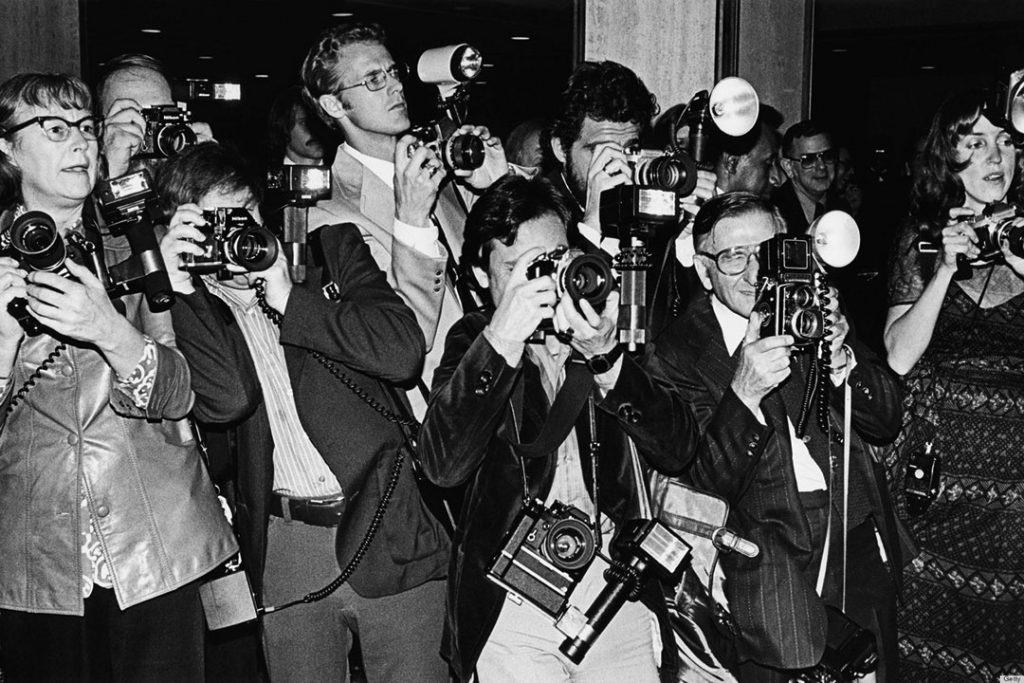
Undeserved Ridicule?
As cameras became faster and lighter and strobes became stronger, civility seemed to go out the door. A good example is Ron Galella, who became the epitome of this behavior. Dubbed “Paparazzo Extraordinaire”, his “in your face and space” style was sometimes praised and sometimes lambasted by even his own ilk. Not only did Jackie O actually sue him twice, but Marlon Brando broke his jaw. Despite this, he was relentless. Which only proves that this is not a business for the weak of spirit. And that the line between art and obsessive stalking is paper thin.
Fellini’s La Dolce Vita and the Paparazzi
I’m not sure if Dolce & Gabanna were poking fun at the paparazzi or embracing the genre in their 1992 campaign. As they still use Italian life themes in most of their campaigns, (they are Sicilian, after all), I assume it was just a nod to Federico Fellini and his film “La Dolce Vita” and the photographer named Paparazzo in the film. (the origin of ‘paparazzi’)
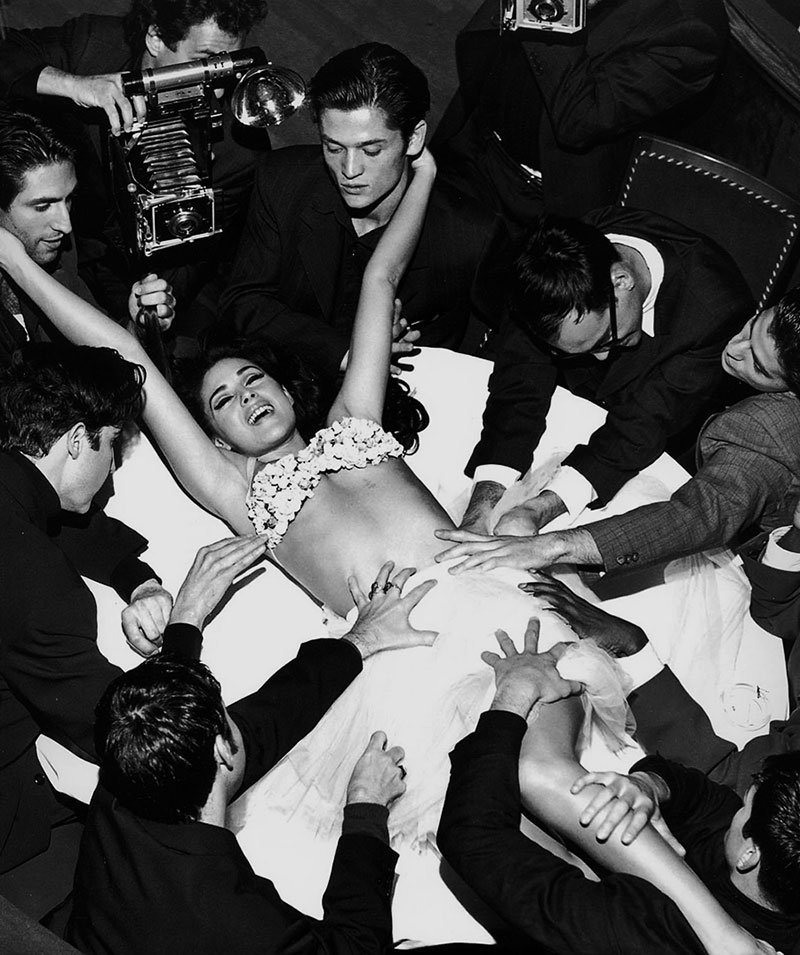
By the late 1960s, the word actually became a nefarious term for photographers who invade the personal space of celebrities. Whether true or not. But, at least the original film shooters were mostly shielded from the brunt of that disdain.

